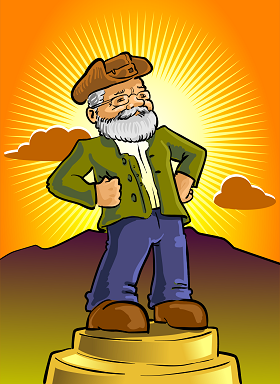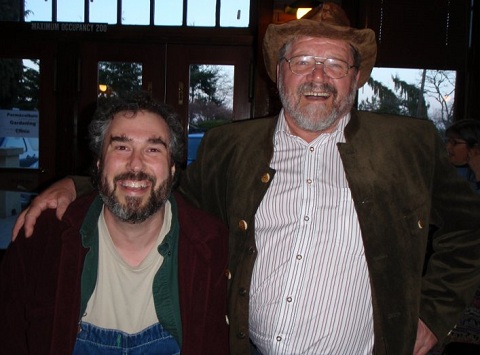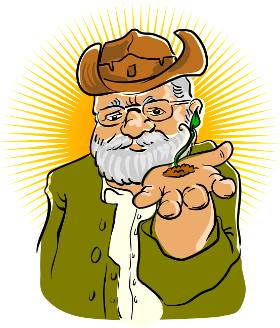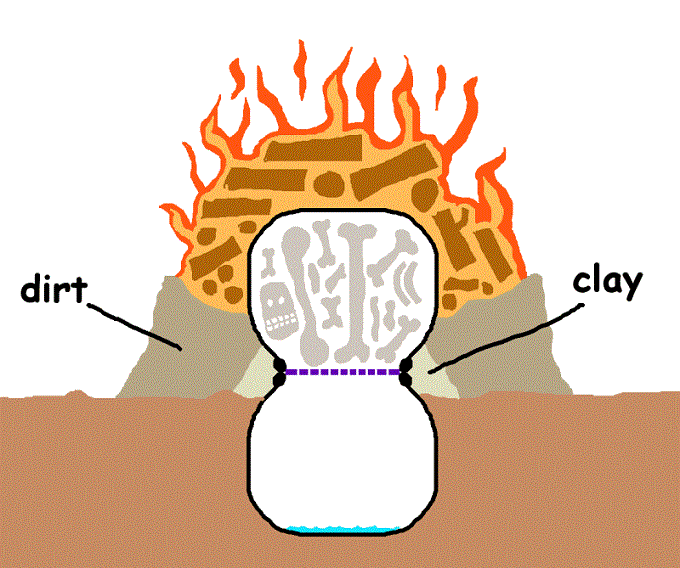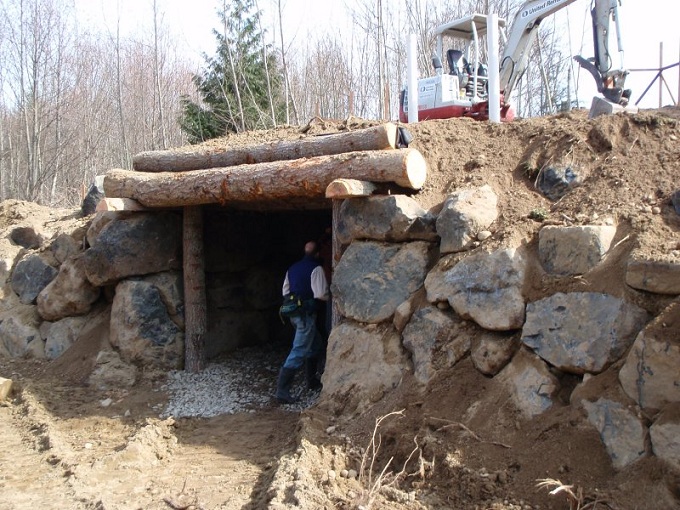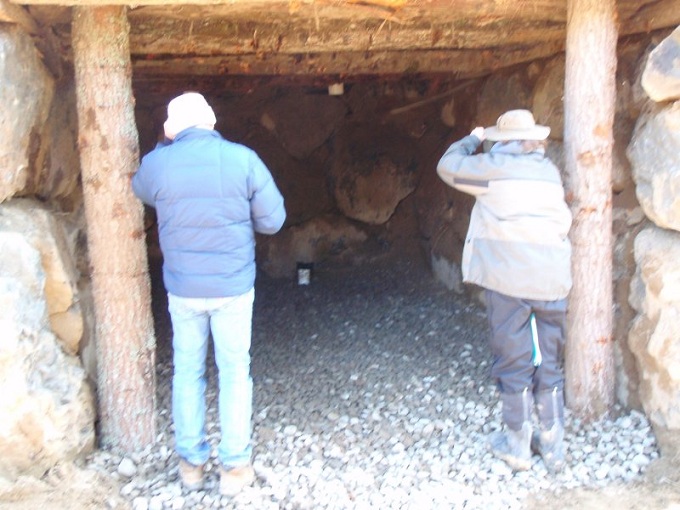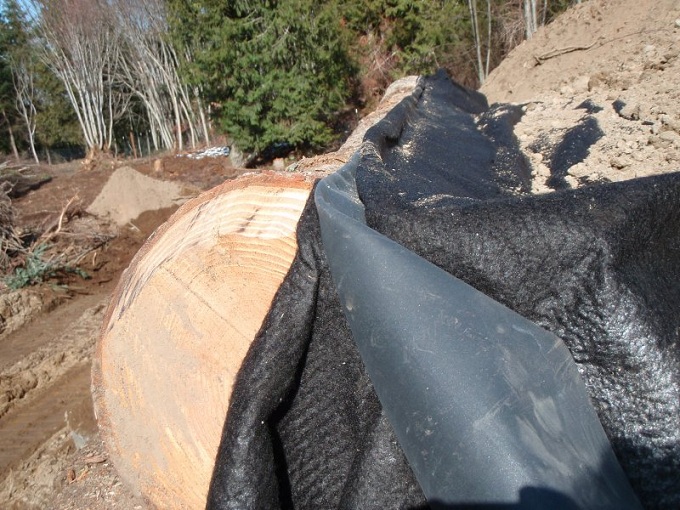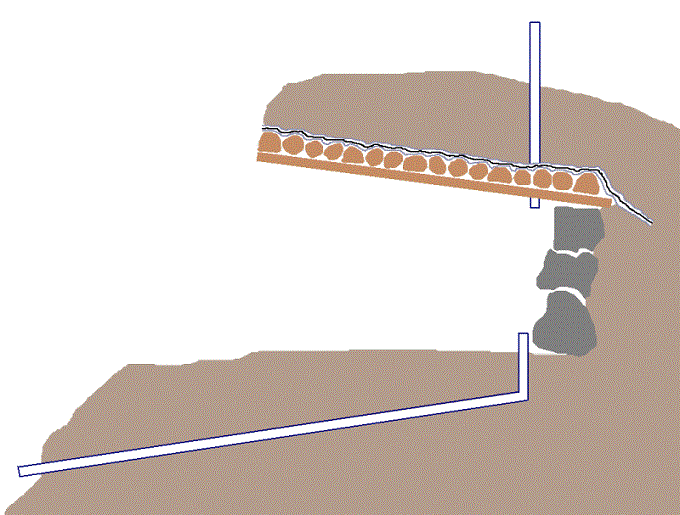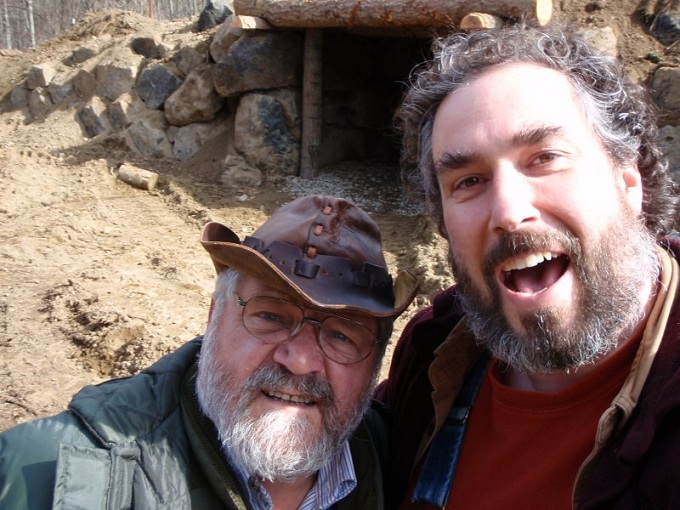Sepp Holzer on sealing ponds and "the monk"
Sepp does not like to draw pictures. In twelve days of training, Sepp never did a powerpoint, although he did have somebody else show some of his pictures from previous projects.
The way he conveys nearly all information is through telling stories and interpretive dance. By "interpretive dance" I mean that he speaks a lot through his hands. Maybe that was just because most of us in the audience didn't speak german - but I see him doing it in the german video too.
"The Monk" is something he frequently talks about. Through interpretive dance. He places his right elbow in his left hand and makes his right forearm perfectly vertical. After a second, he moves his right fist left and right a few inches.
I've seen him do this about 40 times now.
All ponds have a high flow over flow that is used sporatically, but the monk is there for 24 hours a day, 365 days a year. It is a pipe that goes through the dam at a low point. Inside the pond there is an elbow that will connect this pipe with a pipe that goes to the surface. The top of the second pipe will then determine the water level of the pond.
These two pipes and the elbow are "The Monk". The key is, that the elbow is a tight fit, but can still slide a little. So if you move the monk side to side, you can adjust the depth of the pond.
When we were at Mowich farm, Sepp was quick to point at a culvert and holler "catastrophe!" (a word that must be the same in german and english). He then tells a story about how there will be a great rain storm at 2am and the culvert plugs, the water rises, runs over the dam and the dam is destroyed. As part of the story he holds his hands together and places them next to his head to show the pond owner asleep at 2am.
Later that day, I asked if the monk would ever plug: "NEVER!" The interpretive dance had the body language of waving me off because I'm a stupid child (with good humor). He then talked about how they use the monk in some interesting ways to "vacuum" up algae, elodea and even silt. They would go so far as to attach poly pipe to the end of the monk and then buzz around the pond sucking up all sorts of things. And what's fun is to put an even longer pipe on the downhill side and then you get super duper suction power.
Later I asked Josef, who tends to be a bit more humble: he says that it is true, you can have all sorts of leaves and other debris in the pond and monks just don't seem to plug up.
So, I'm thinking about this ... and I think I can see it ... because 1/16 or 1/8 of an inch of water goes over the edge of the monk and into the monk. Then debris, which is gonna have some in the water and some out, won't be able to make that tiny, sharp, downard turn. Debris would just sit around outside the monk. The culvert could do the same trick if it were lower in the dam and had an upwards elbow. Big sticks and logs ... the only stuff that could plug the 18 inch culvert we were looking at ... would not be able to get over the edge of the same culvert standing on end.
So here is my rendition of a pond with a standard culvert.
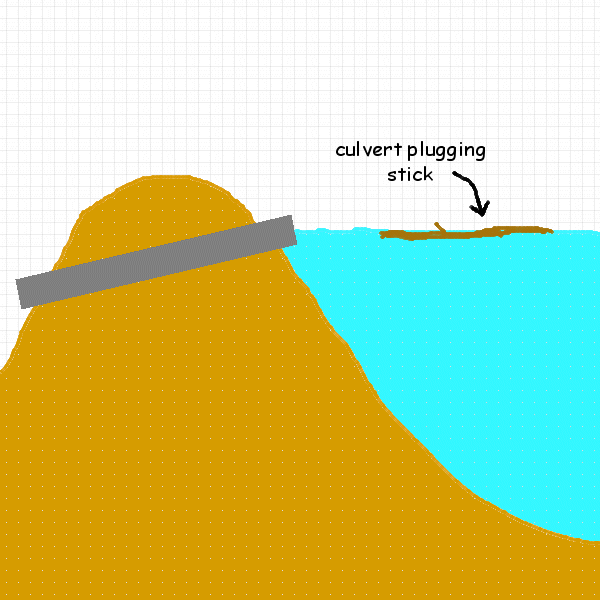
And here is my rendition of the same pond with the culvert modified so that it will, in theory, not plug. I can just hear Sepp getting all upset over my use of the word "theory", because to him, it is absolute fact.
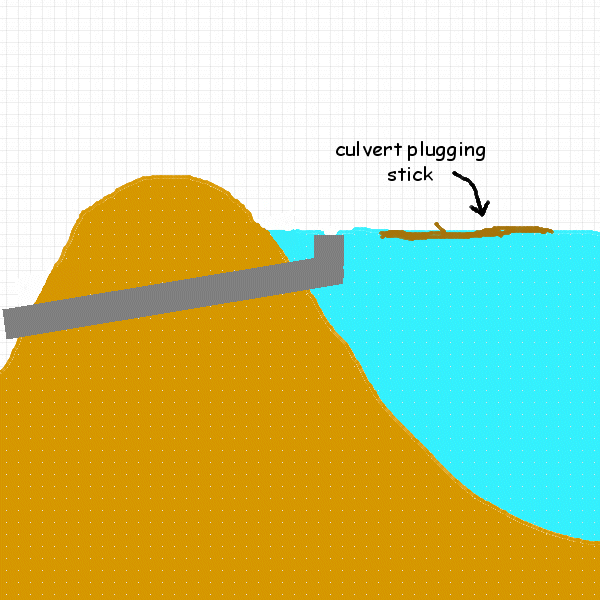
Now I've zoomed in on the stick coming up on the culvert ...
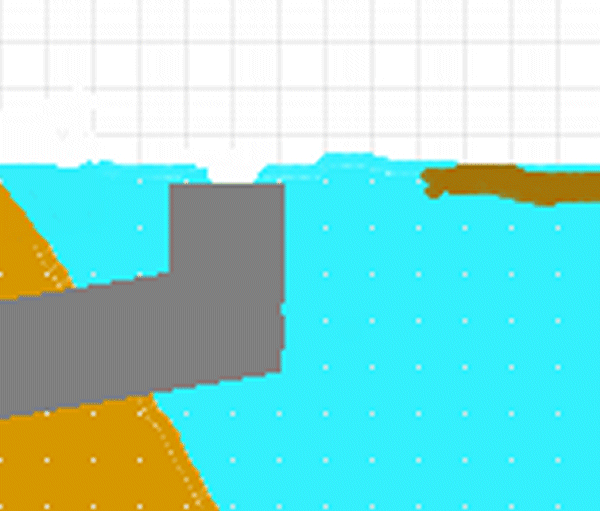
And I've tried to modify the picture a little to show the stick much closer to the culvert. The stick will stop at the outside edge of culvert and go no further.
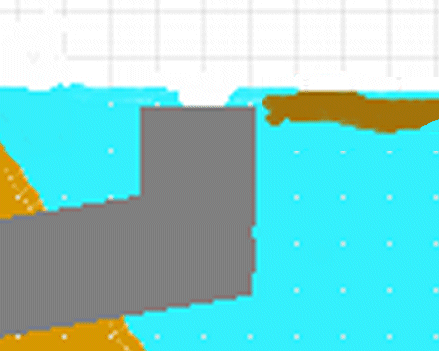
And now for the frosting on the cake ....
Sepp has 72 ponds at his place and he has probably built hundreds of ponds outside of his property.
He has been fiddling with the very top edge of the monk ....
This might be a good time to point out that in a couple of his videos you can see the monk in action. And in at least one shot is a close-up, complete with sound and the monk is making this "thip-thip-thip-thip" sound. Sepp thinks that getting the monk to make that sound is the best thing ever.
So, he's fiddling with the top edge just a tiny bit - like a millimeter worth of fiddling. He's trying to encourage the water to go down the monk as a spiral. But if he can get the "thip-thip-thip" that's even better.
He talks about getting a lot of oxygen in the water. And he talks about catching fish out of the pond where the water comes out of a monk from a higher pond and dribbles into this pond. So he will catch fish from the end of the pond where the water dribbles in and from the other end. The fish from the end with with water coming in have more life and energy than any other fish on his property. I've heard him tell this story three times, where the fish is so full of life it even leaps out of the pan (no innards and no head). repeatedly. He ends up cooking the fish by holding it in the pan.
Sepp has a certain sort of spiritual connection with his land. And it seems that this whole life force thing involving the spiraling water in the monk is a really big part of it. And the "thip-thip-thip" is even better.
I kinda wonder if it is nothing more than the water has a maximum of dissolved oxygen at that point, and that is what makes the fish so lively. My impression is that Sepp thinks there is more to it.
More about Sepp Holzer's ponds with the monk.
